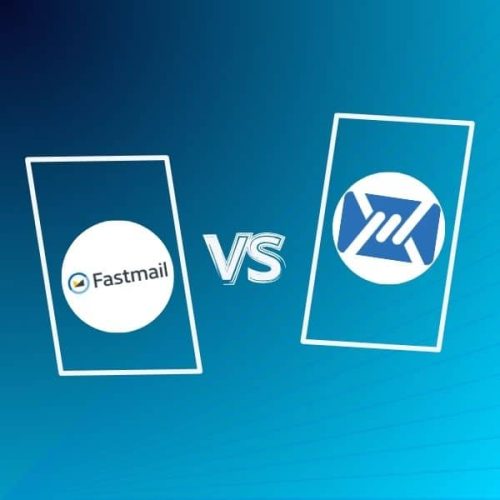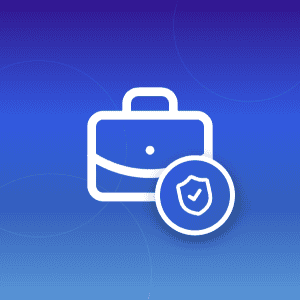With Big Tech fuelling surveillance capitalism, data privacy has become more important than ever. Choosing the right email provider means finding the right mix of security, productivity, and value, without compromising your personal information. This guide compares Mailfence vs Fastmail across all the essentials to help you decide which one fits your needs best.
Want to compare more providers? See how Mailfence stacks up against 9 other private email services in our complete guide of the 10 best secure email providers, including detailed security scores and pricing.
About Fastmail and Mailfence
Fastmail is an Australian-based email service founded in 1999. Their focus is on productivity and making your email experience fast and smooth. They also put forward their focus on privacy and security, but do not provide end-to-end encryption natively (more on that later).
Mailfence, headquartered in Belgium, was also founded in 1999. The primary focus of Mailfence is on user privacy and security through tools such as OpenPGP encryption, password (symmetric) encryption, digital signatures, and more. They offer a full Office-style suite (email, contacts, calendar, documents), all under Belgian jurisdiction, protected by strict privacy laws and requiring local court orders for data access.
Mailfence — Your secure Productivity Suite
Reclaim your Privacy with
- Messages
- Calendars
- Documents
- Groups
Pricing Comparison
Mailfence offers a permanent free tier with 1 GB of storage, ideal for light users or for thoroughly testing the platform before committing. If you like what you see but need more storage or more capabilities, you can upgrade to a premium plan.
On the other hand, unlike most email providers, Fastmail does not offer a free plan.
Instead, it provides a 30-day free trial, which may not be sufficient to fully migrate, explore, and evaluate an email service with long-term workflows. Users must subscribe after the trial to retain access, even if they’re still testing.
Here’s a more detailed view of the different pricing plans and how many users each allows:
| Mailfence Plan | Mailfence (# users) | Fastmail Plan | Fastmail (# users) |
|---|---|---|---|
| Free (0€/month) | 1 | 30-day trial (0€/month) | 1 |
| Base (2.5€/month) | 1 | Basic (3€/month) | per user |
| Entry (3.5€/month) | 3 (+ 2 more paid users, optional)* | Standard (5€/month) | per user |
| Pro (9.5€/month) | 11 (+ 190 more paid users, optional)* | Individual (5€/month) | 1 |
| Ultra (29€/month) | 11 (+990 more paid users, optional)* | Duo (8€/month) | 2 |
| / | / | Professional (9€/month) | per user |
| / | / | Family (11€/month) | 6 |
*paid users are additional users an admin can manage, each with their own subscription (Base/Entry/Pro/Ultra)
In this regard, Mailfence is much better suited for families and small organizations than Fastmail. Let’s look at a few use cases:
- A couple:
- Mailfence: 1 Entry plan at 3.5€/month is sufficient
- Fastmail: 1 Duo plan is required, at 8€/month
- A family of 2 parents and 1 child:
- Mailfence: 1 Entry plan at 3.5€/month is sufficient
- Fastmail: 1 Family plan is required at 11€/month
- A company of 10 employees:
- Mailfence: 1 Pro plan at 9.5€/month is sufficient
- Fastmail: you would need 10 Basic plans at a minimum, totalling 30€/month
Mailfence is not only a more affordable solution, but it also scales better to meet user needs.
Mailfence vs Fastmail: Feature Comparison
Encryption
- Mailfence utilizes full OpenPGP, enabling users to generate and manage keys within the built-in keystore, supporting signing, encryption, and managing multiple keys with full visibility and control. Mailfence also offers password-encrypted emails.
- Fastmail does not offer end-to-end encryption. It leaves that to third-party tools like PGP plugins. Fastmail doesn’t offer password-encrypted emails either.
For users who prioritize privacy and security of their communications, Mailfence is the obvious choice.
Collaboration Tools
- Mailfence includes shared calendars, contact management, cloud storage (WebDAV accessible), and shared inboxes, enabling team workflows and real-time collaboration.
- Fastmail offers email, calendar, and contacts, but lacks a cloud storage solution. Additionally, you can share email folders with other users, but not your entire inbox.
Email comparison
| Feature | Mailfence | Fastmail |
|---|---|---|
| Aliases | ✅ | ✅ |
| Password-encrypted emails | ✅ | ❌ |
| OpenPGP-encrypted emails | ✅ | ❌ |
| OpenPGP digital signatures | ✅ | ❌ |
| Custom domains | ✅ | ✅ |
| Shared inboxes | ✅ | ❌ |
| Snooze emails | ❌ | ✅ |
Calendar comparison
| Feature | Mailfence | Fastmail |
|---|---|---|
| Group Calendar | ✅ | ✅ |
| CalDAV support | ✅ | ✅ |
| Event tags | ✅ | ❌ |
| Public access to Calendar | ✅ | ✅ |
| SMS Calendar Reminders | ✅ | ❌ |
| Polls (Doodle-like) | ✅ | ❌ |
| Push notifications | ❌ | ✅ |
Cloud storage comparison
Fastmail does not offer a cloud storage solution. However, here are some of the features you can expect from Mailfence
| Feature | Mailfence | Fastmail |
|---|---|---|
| Group Documents | ✅ | ❌ |
| WebDAV Access | ✅ | ❌ |
| File Link Sharing | ✅ | ❌ |
| Public Sharing | ✅ | ❌ |
| WebDAV/SMB Client | ✅ | ❌ |
| Tags | ✅ | ❌ |
Contacts comparison
| Feature | Mailfence | Fastmail |
|---|---|---|
| Group adress book | ✅ | ✅ |
| CardDAV Syncronisation | ✅ | ✅ |
| Tags | ✅ | ❌ |
| Comments | ✅ | ✅ |
Interoperability
- Mailfence embraces open standards, supporting OpenPGP, IMAP, POP, SMTP, CalDAV, CardDAV, and WebDAV access, all integrated without bridges.
- Fastmail similarly supports IMAP, POP, SMTP, and JMAP, plus calendar and contact sync via CalDAV/ CardDAV. It lacks document hosting but integrates well with email clients.
On this front, besides the fact that Fastmail does not support OpenPGP natively, both services have a strong focus on open standards.
Mailfence vs Fastmail: Wrap-Up
Mailfence stands out for its commitment to privacy and open standards, offering end-to-end encryption, digital signatures, a full collaboration suite, and strong legal protections under Belgian jurisdiction.
On the other hand, Fastmail, as the name suggests, has put the focus on a fast and sleek email experience. However, it lacks built-in encryption and some collaborative features. If you prioritize a smooth experience over data privacy, then Fastmail might be a better option.
Create your free account today, and join the fight for online privacy!



